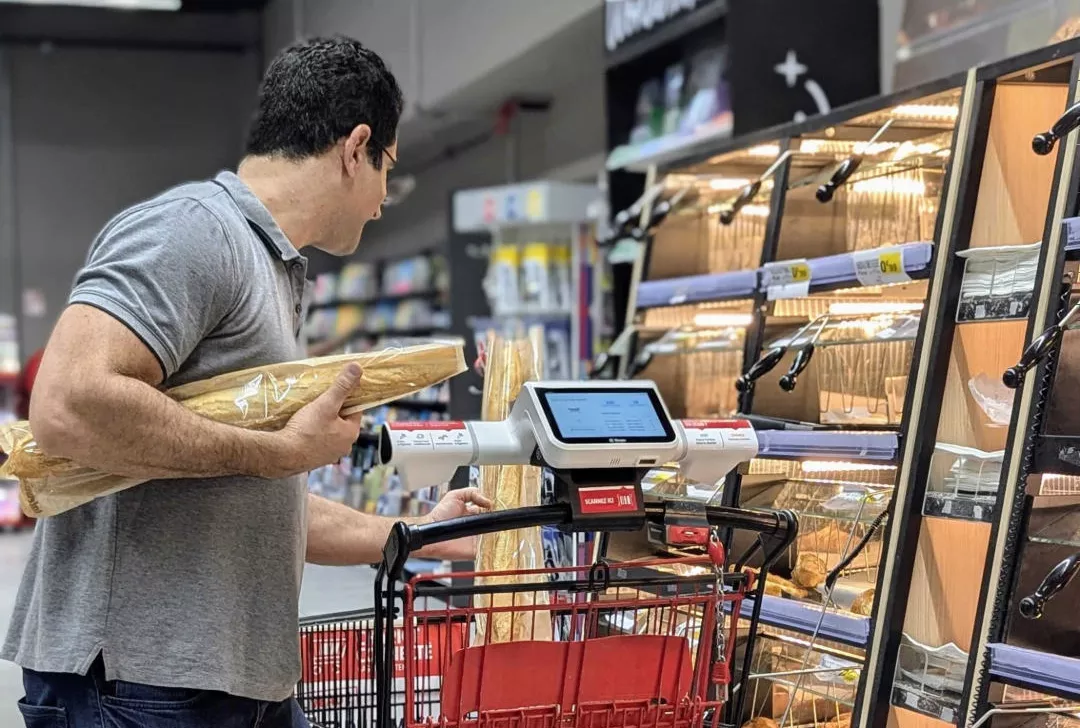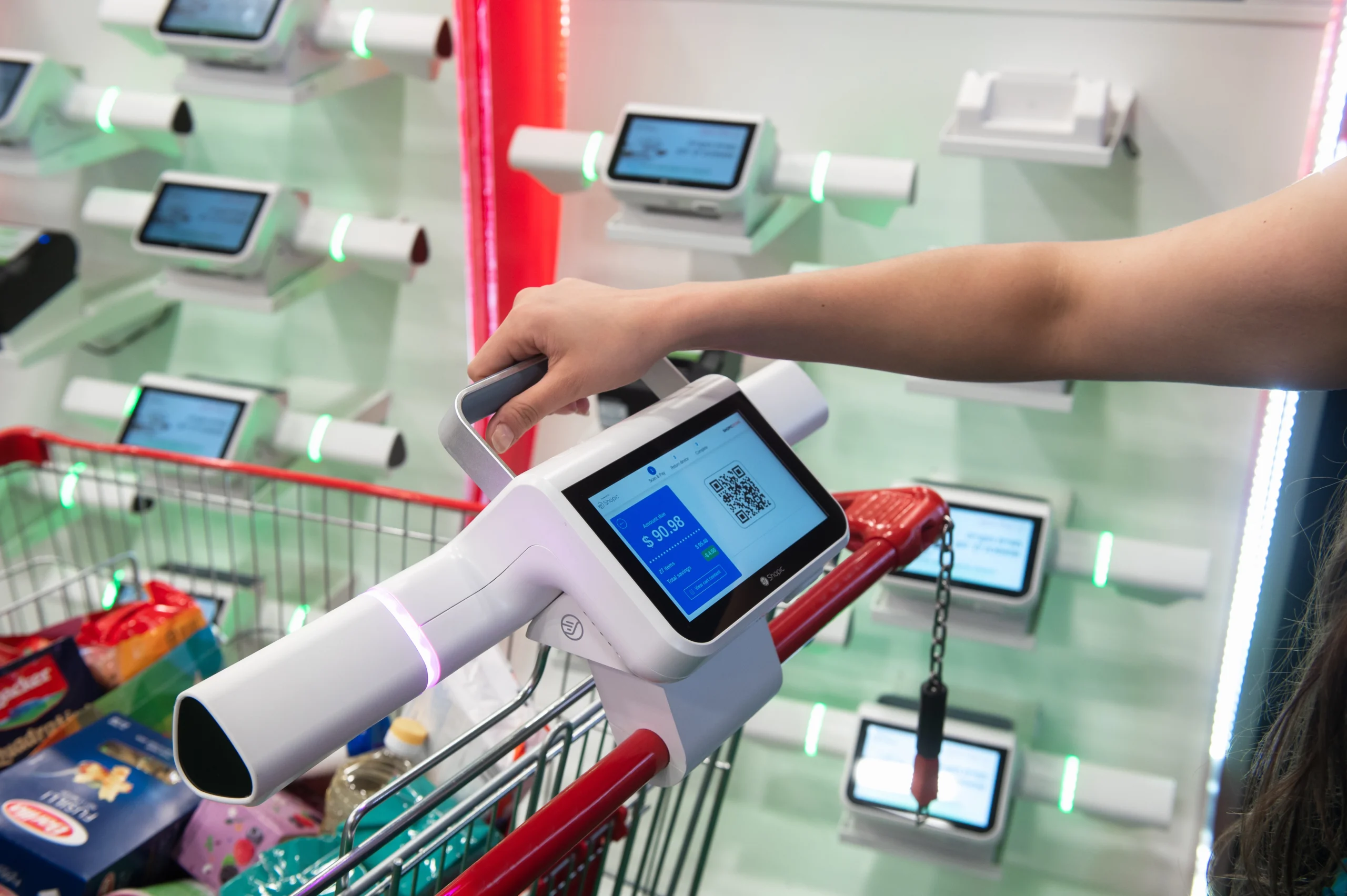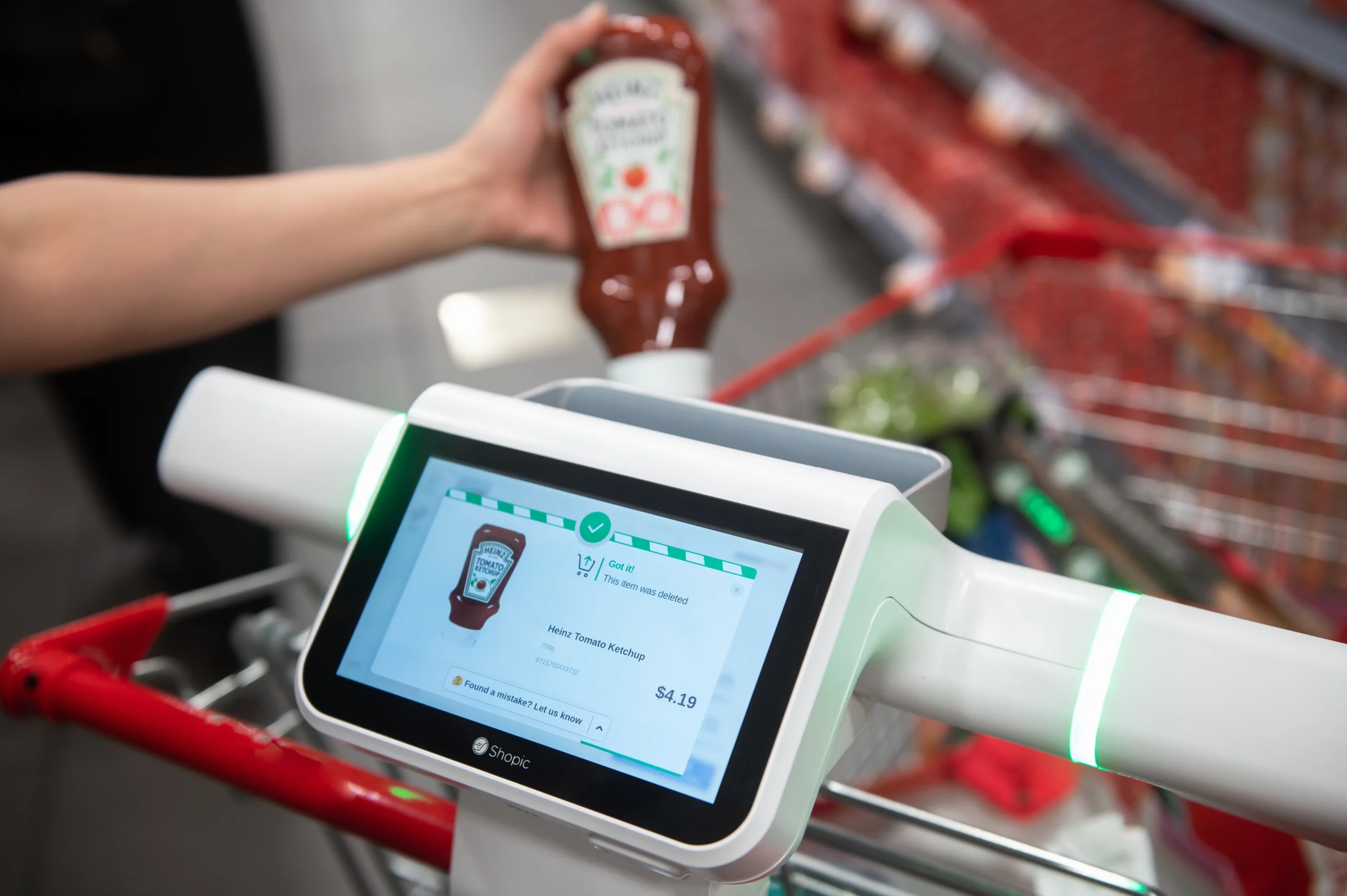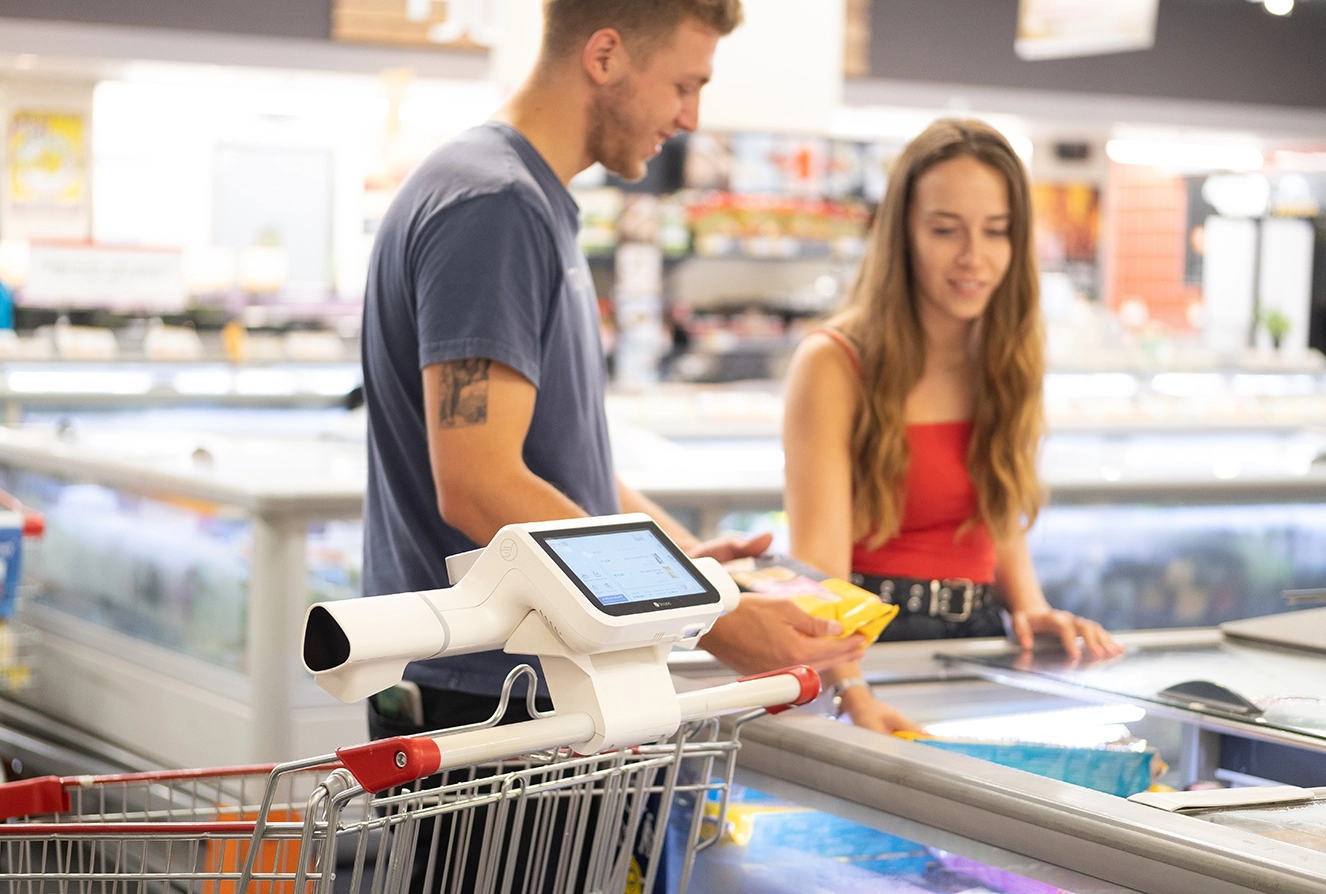
Smart shopping carts are making their way into more supermarkets. Albertsons and Kroger are two major brands that have brought new technology into their stores. Edeka, Germany’s largest supermarket chain, offers them to customers, as does Shufersal, the largest supermarket chain in Israel.
Smart carts help level the retail playing field between online and brick & mortar commerce. The digitalized experience rivals that of e-commerce. Retailers can have a closer view of the customer journey, deliver perfectly timed promotions, and uncover new insights that drive in-store optimizations.
However, it’s not just retailers who are embracing smart cart technology. Early research indicates that consumers are more likely to return to a store with smart carts. They are highly satisfied with their experience and tend to spend more when using the smart cart.
Adding smart carts to a retail store is an easy decision for retailers locked in heated competition with online rivals. Choosing the right cart, on the other hand, can be challenging. Here are 5 functions that consumers expect from a smart cart.
Ever since the first shopping cart was invented in 1937, consumers have walked down the aisles of their favorite grocery and placed the items they want in their cart. For smart carts to be embraced, they need to offer the same user experience.
Customers using smart carts expect to place boxes of cereal, bags of pasta, and cans of baked beans into their cart just as they always have. The cart must be able to read the item as it goes into the cart, and if customers change their mind and remove it from the basket, the cart must recognize that action as well. They don’t want to start scanning every bar code as they walk through the store.
Maintaining the same in-store user experience is vital for wide-spread adoption by consumers. Consumers have become accustomed to technology performing seamlessly, and smart carts are no different.
Consumers love saving money, especially with coupons that are offered during shopping. These coupons can be delivered on-screen as the customer approaches some items or after items have been scanned to increase purchases through buy-one-get-one offers.
Smart carts delight consumers by offering in-context coupons, automatically applying the discount when the item is placed in the cart.
When consumers walk through a typical grocery, they rarely know the exact cost of the items in their cart. For budget shoppers, this can be worrisome, but even non-budget shoppers like to know the cost of the items in their cart.
Consumers love getting real-time feedback from the cart’s display of their spending. Displaying the total value of the groceries in the cart allows them to adjust their shopping.
While this may be disconcerting to retailers who prefer customers continue to shop unaware of how much they are spending, it actually has two interesting effects on consumer behavior.
First, it drives them to select more private label items. Store-branded merchandise, which is priced lower than national brands, may bring down the overall shopping cart value. However, these items typically have higher margins, meaning more profits for the store.
Second, it tends to increase loyalty. Consumers prefer to shop in a store where they have more control over their spending. Showing them real-time prices empowers them to make shopping choices that fit within their budget.
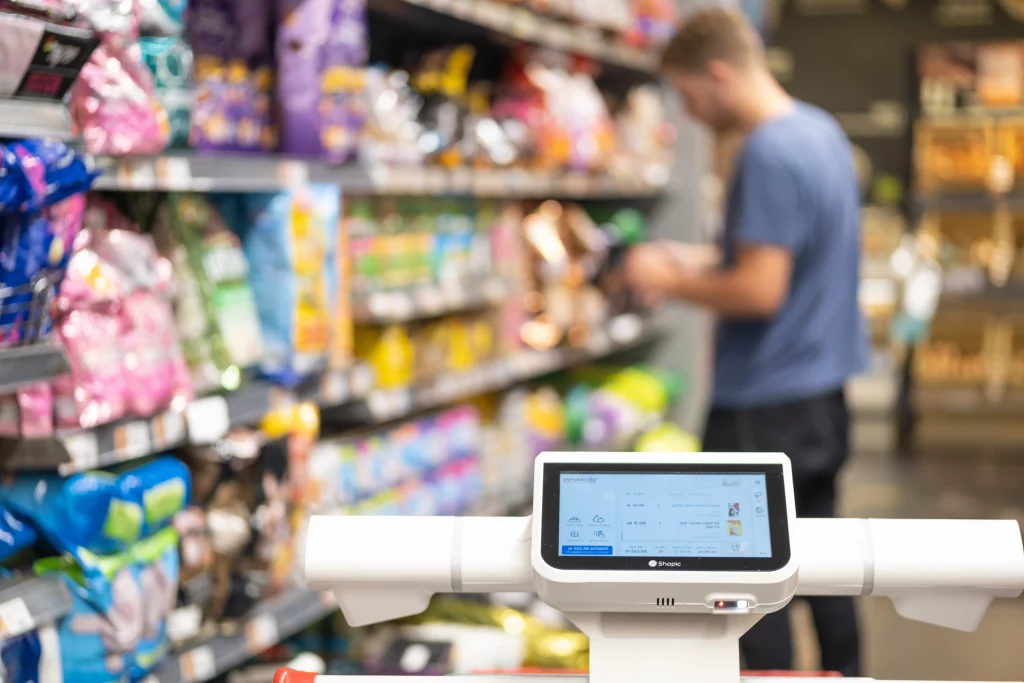
Consumers love getting real-time feedback from the cart’s display of their spending.
The supermarket process is one of the most frustrating processes that consumers have to go through. First, they take items off the shelf and put them in their cart. Then, after waiting in line, they place their items on the checkout counter. Each item is then placed in a bag and returned to the cart. Next, it is wheeled to the parking lot, placed in the car, and driven home.
Smart carts simplify that entire process, cutting out the line and checkout process. As consumers shop, they place groceries in bags within their cart. When they are done, they want to wave their phone or credit card in front of the credit card reader and pay for their groceries without removing every item from their cart, bagging them, and putting them back in the cart.
Instead of standing around waiting to check out, they simply pay and push their cart out to the parking lot.
When trying out new technology, some consumers fear that it won't work. In the case of a smart cart, they picture themselves in the cereal aisle, unable to add a box of Cheerios to their cart, or trying to check out only to discover the payment mechanism doesn't work when they finish shopping. In this scenario, their shopping trip is derailed, and they see themselves waiting in an endless line to get the technology sorted out.
Adding a help button that will bring assistance to them wherever they are in the store goes a long way to alleviate those concerns. The help button offers the promise of assistance coming to them. If items aren't entered correctly, or there is an issue with the screen, they have confidence that store personnel will help them resolve the issue.
As in-store technology increases, consumers are going to find a comparable experience between their online and brick & mortar shopping trips. Smart carts are a big piece of the puzzle, but it’s important to choose the right cart for your consumers.
